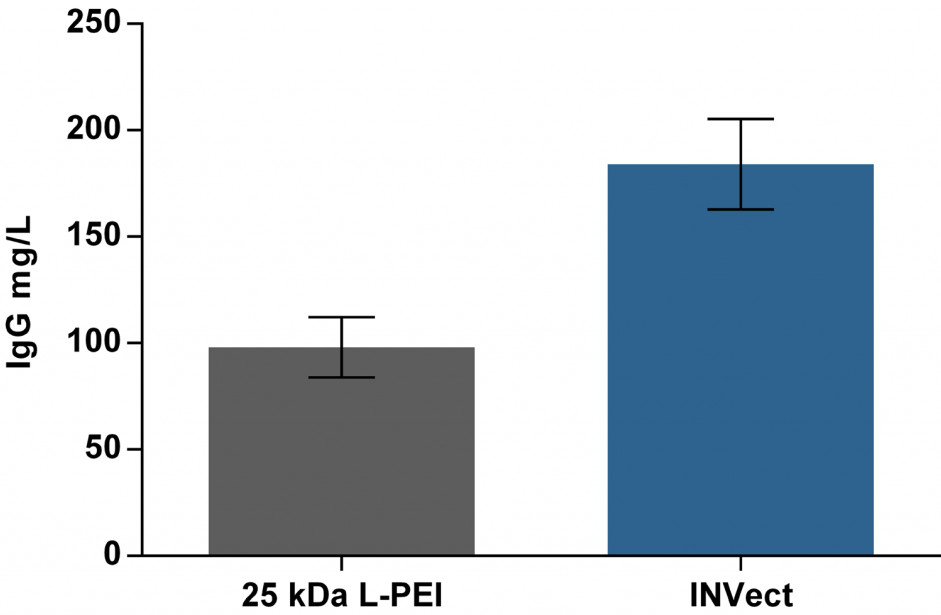INVECT for high transfection efficiencies
It all started in 1973 when calcium phosphate co-precipitation was used for DNA transfection. This method was based on electrostatic interactions, whereby positively charged calcium ions interact with the negatively charged DNA backbone to form a net-positive complex which is internalized by the cell. Most chemical transfection reagents, especially polycationic polymers, follow the same principle of forming complexes (polyplexes). Polyethylenimin (PEI) for example is a polycationic polymer with C2H5N as its repetition unit. The incorporated amino functional groups have alkaline character and lead to aqueous solutions of pH 11‑12. This property of PEI is useful for transient transfection of mammalian cells like CHO or HEK, taking into account that the ratio of cationic nitrogen residues (N) to anionic phosphate groups (P) of the DNA backbone is very important. The N/P ratio is involved in zeta potential, condensation grade, size, net charge etc. and therefore the optimal N/P ratio for transfection depends highly on cell line and culture medium. While the zeta potential mainly affects internalization of polyplexes into the cell (supposedly through receptors on the cell surface), the condensation grade is necessary for protection of the DNA introduced during the lysosomal pathway to allow unharmed transport into the nucleus.
Commonly used transfection reagents, such as PEI, are quite cytotoxic when used in high concentrations and this limits the maximum transfectable DNA amount. InVivo in cooperation with emp Biotech developed the transfection reagent INVect. INVect is a transfection reagent which demonstrates low cell toxicity for transient transfection of mammalian cells and delivers extremely high transfection efficiencies up to 90%, 24 h post transfection. The use of INVect for transfection under TGE conditions leads to exceptionally high levels of protein expression.

Antibody quantities (7 days post transfection) expressed by HEK293 using indicated transfection reagent. The newly developed INVect demonstrates low cell toxicity in combination extremely high transfection efficiencies up to 90%, 24h post transfection. Using of INVect at production conditions results in 2-fold increase in productivity compared to 25 kDa linear PEI.